Herons are freshwater and coastal birds in the family Ardeidae. We have several resident and migrant heron species in the UK, including bitterns, which are a part of the subfamily Botaurinae, and egrets, which, despite being named differently, are not a biologically distinct group from herons. There are also several similar bird species outside of this family that might make identification difficult, particularly from a distance, such as cranes, ibises and spoonbills. One of the distinctions between these birds and the herons that resemble them is seen in flight; herons fly with their neck retracted, while cranes, ibises and spoonbills fly with them extended.
Many heron species have faced persecution during the 19th and early 20th centuries due to hunting for their plumes, which were used for hat decorations. They’re present on all continents except Antarctica and inhabit a wide variety of habitats, feeding on the margins of water bodies such as lakes, rivers, and the sea.
Herons are medium to large-sized birds that have long necks and legs. To identify individual heron species, look for key features such as size, foot and bill colour, plumage colouration and distribution. However, many species can have different colour morphs and some features of breeding individuals can also change colour. Using equipment such as a scope or a pair of binoculars, as well as a guide covering all colour morphs, can be helpful.
Grey Heron (Ardea cinerea)
Distribution: Widespread
Wingspan: 155–195cm
Bird of Conservation Concern 4 (BoCC4) status: Green
What to look for: This is a tall bird, with grey and black wings, a yellow bill and long, pale legs. They’re a grey-backed species, with a long, white or pale grey long neck and a white head with black eyestripes that extend to long crest feathers. They have dappled black and white plumage on the front of their neck. Grey herons can usually be seen standing very still, either stretched out tall or with their neck retracted, at the edges of water bodies.
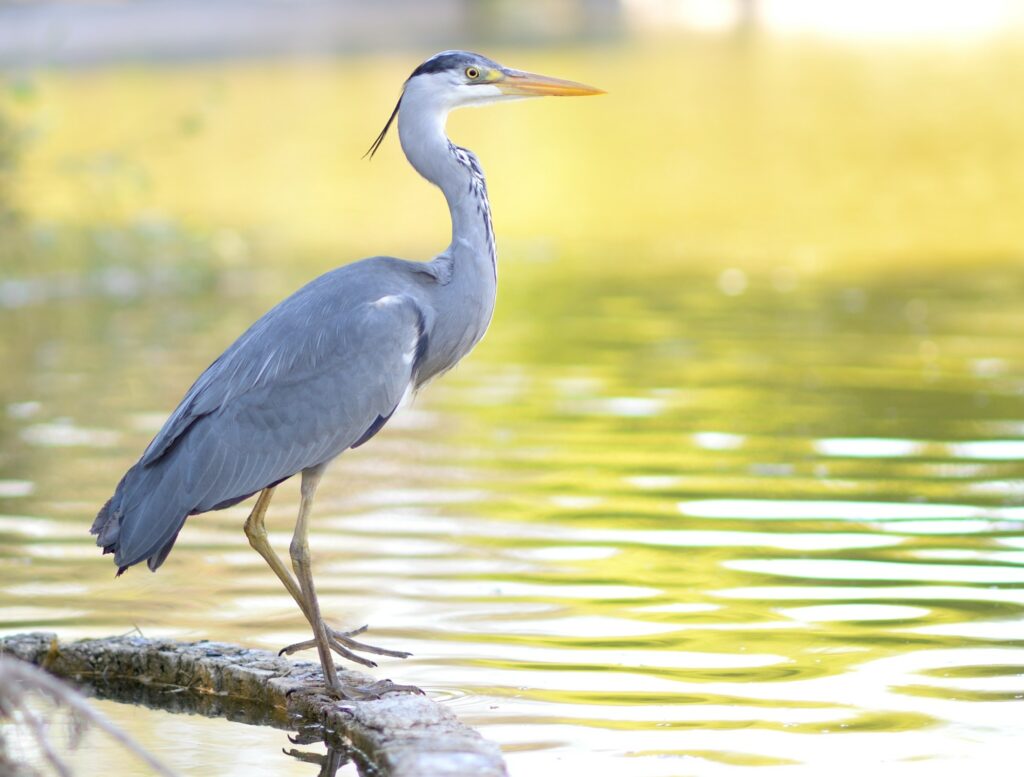
Little Egret (Egretta garzetta)
Distribution: Common in the south and east coasts of England and Wales, with their range increasing northwards.
Wingspan: 88–106cm
BoCC4 status: Green
What to look for: The little egret is a white bird with long crest feathers at the back of their head during the breeding season. They have a black bill and legs, and one of their most defining features is their bright yellow feet. Apart from the feet, they are similar to the great white egret but little egrets are more common and smaller, about half the size of the grey heron. They also have featherless ‘lores’, the region between the eye and the bill, which can be pale yellow or greenish. This helps to distinguish them from the much rarer migrant, the snowy egret (Egretta thula), which have bright yellow lores that meet across the top of their beak. Snowy egrets also have yellow along the backs of their legs.
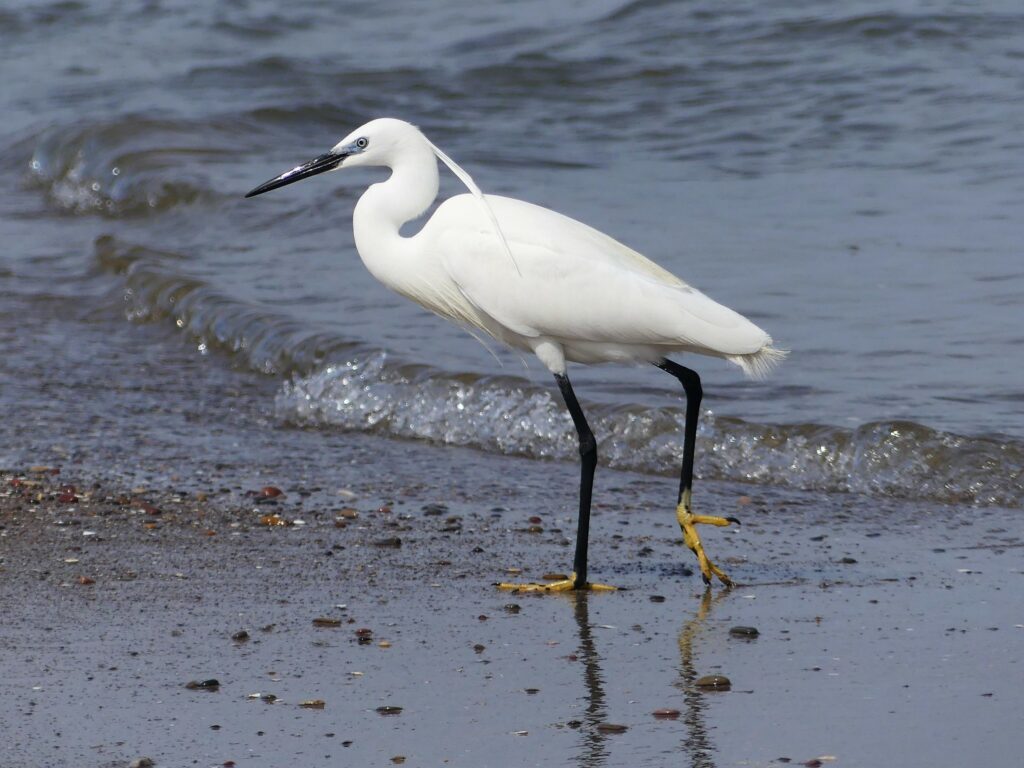
Great White Egret (Ardea alba)
Distribution: Widespread, most common in south-east England and East Anglia.
Wingspan: 131–170cm
BoCC4 status: Not assessed
What to look for: This is a tall bird of similar size to the grey heron, with an all-white plumage. Because of this colouration, they can be confused with the little egret but this species is much larger and lacks the bright yellow feet. They also have a yellow bill, but this becomes mostly black during the breeding season. They have long black legs with paler upperparts that can turn red in breeding birds.
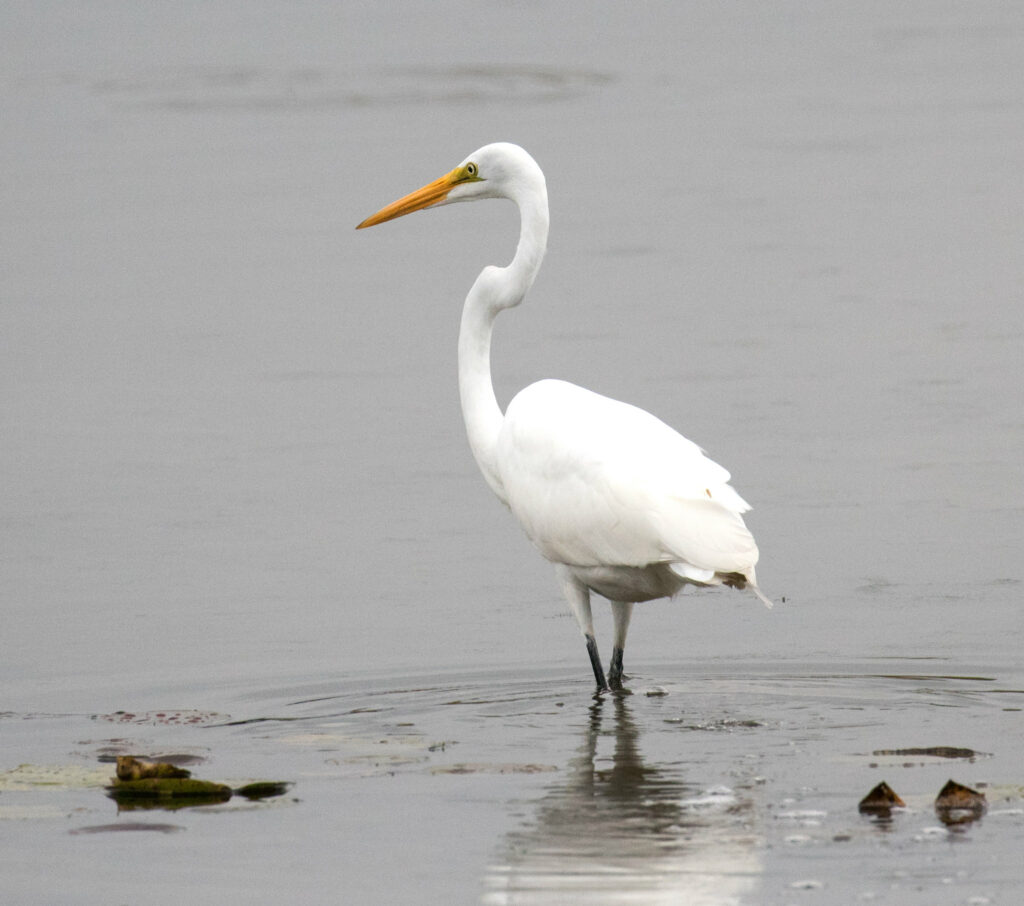
Eurasian Bittern (Botaurus stellaris)
Distribution: Restricted to mainly Norfolk, Suffolk and Lancashire
Wingspan: 100–130cm
BoCC4 status: Amber
What to look for: This bird has a buff-brown coloured plumage with dark bars and streaks. The crown of their head is black, with a buff line above their eye and a dark brown moustache stripe that extends onto the neck. Their bill is yellow and brown, and their legs and feet are a pale green. The males are significantly larger than the females and tend to have more markings, although there is a large variation between individuals.
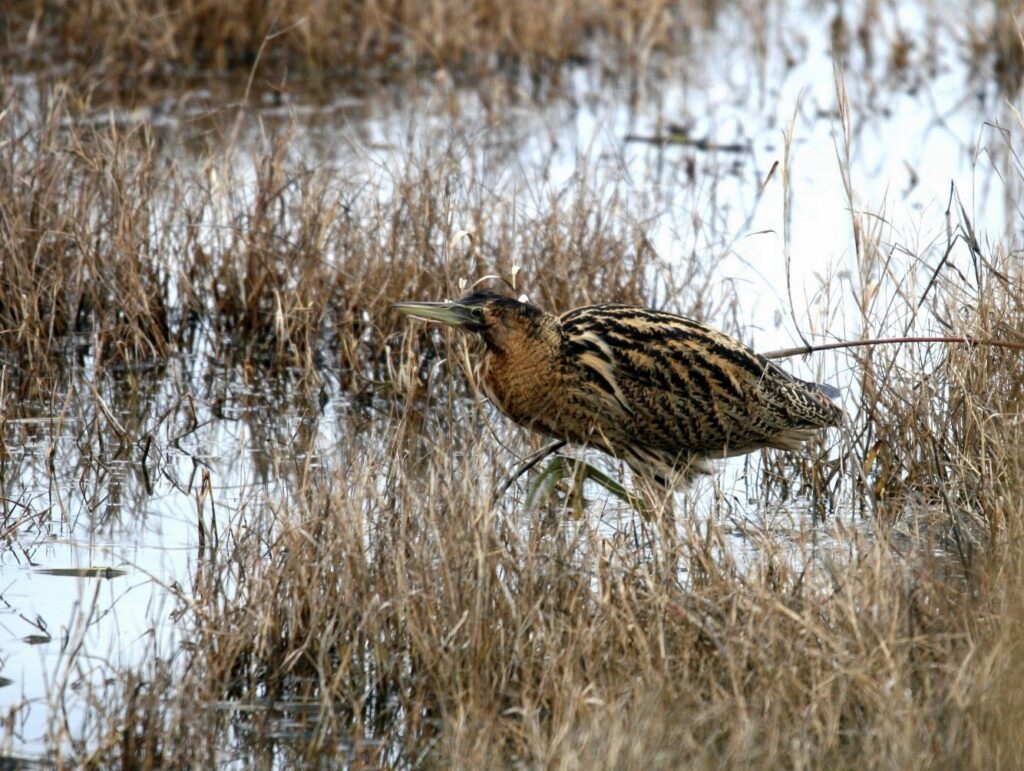
Little Bittern (Ixobrychus minutus)
Distribution: Regular visitors but only two confirmed successful breeding records in Somerset and Yorkshire.
Wingspan: 52–58cm
BoCC4 status: Not assessed
What to look for: The little bittern has a black-green crown, back and tail, with a pale buff underside and wing patches. The sides of their neck are grey and yellow, and they have pale green legs and lores. Their throat is striated with darker brown and paler cream plumage. Their bill can vary from yellow to yellow-green with a brown upper edge.
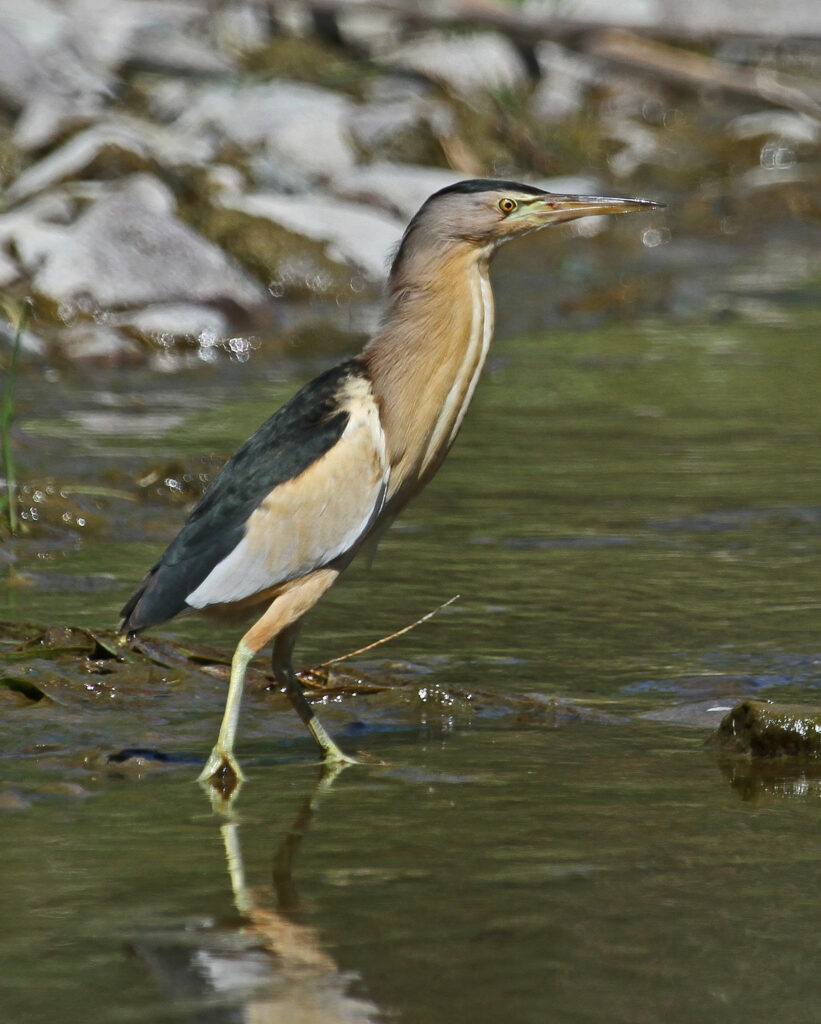
Cattle Egret (Bubulcus ibis)
Distribution: Becoming more numerous in southern Britain and Ireland.
Wingspan: 88–96cm
BoCC4 status: Not assessed
What to look for: The cattle egret is a white bird that, in the breeding season, has yellowish-buff plumes on its cheeks, throat, back, breast and crown. They have a yellow bill and pale legs, both of which can turn red during the breeding season. Some individuals have also been recorded with grey, melanistic plumages. As their name suggests, they’re often seen with grazing livestock, as they consume ticks and flies from cattle.
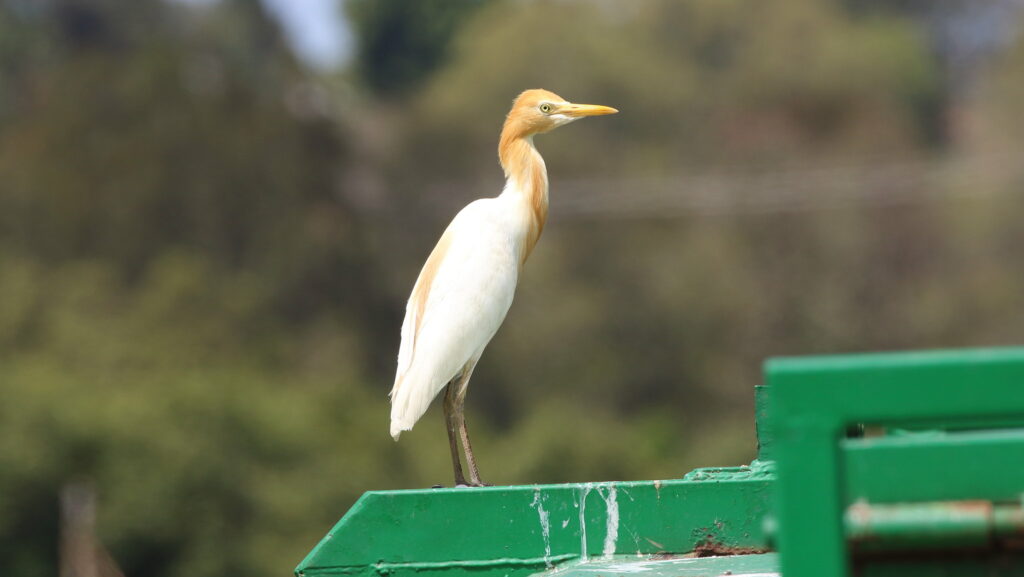
Great Blue Heron (Ardea herodias)
Distribution: Very rare, confirmed sightings in the Isles of Scilly.
Wingspan: 167–201cm
BoCC4 status: Not assessed
What to look for: This species is quite similar to the grey heron, although they can be distinguished by the great blue heron’s long, shaggy chest feathers, browner colouration and slightly larger size. There are thought to be two or three forms of this species, although there is a debate as to whether the white coloured population represents a white morph, a subspecies or a separate species. The white morph has a white plumage, orange bill and orange legs. The dark morph is grey with red-brown upper legs and red-brown plumage along the leading edge of their wings, seen best in flight. They have a reddish-grey neck with a pale head and dark crown. They also have a dull grey bill and legs, which both become orange during the start of the breeding season. The third is Würdemann’s heron, an intermediate morph, thought to be the result of a pairing of white and dark morphs. They are paler than the dark morph, with a white crown and crest feathers, but still maintaining the darker patternation on the wings.
Did you know? There are five accepted subspecies of great blue heron: A. h. herodias, A. h. fanini, A. h. wardi, A h. cognata and A. h. Occidentalis (known as the ‘great white heron’), which can all be distinguished by traits such as wing and bill size, overall size and plumage shade.
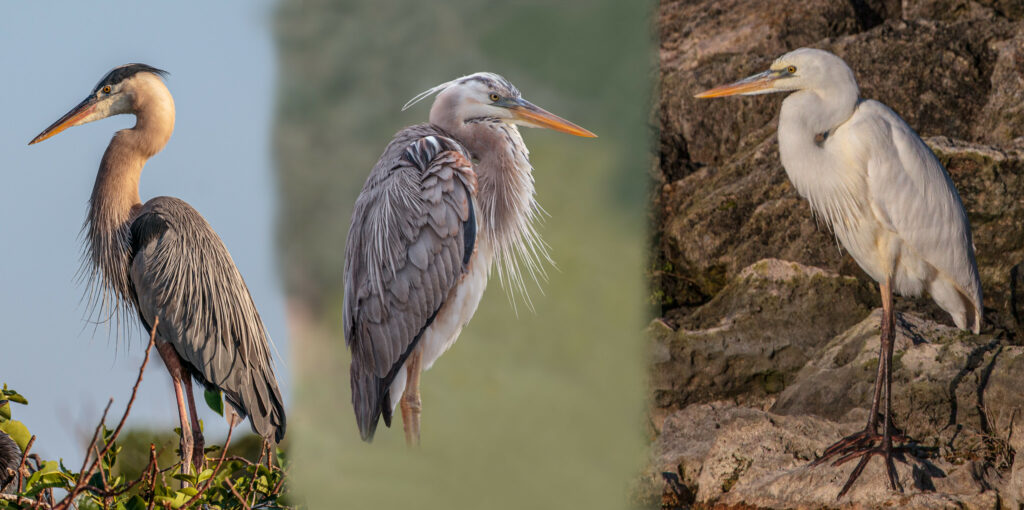
Purple Heron (Ardea purpurea)
Distribution: Rare migrant, with around 20 recorded sightings per year across the UK.
Wingspan: 120–152cm
BoCC4 status: Not assessed
What to look for: This species has a dark grey back, wings and tail. They have a reddish neck with buff-coloured patches and dark longitudinal stripes from their head down to their chest. Their bill is long, with a darker top section. The purple heron also has a black crown that extends in a stipe down the back of their neck and their legs are orange with black stripes. The covert feathers on the bend and underside of their wings are purple, and they also have long, pale feathers hanging down either side of their chest.
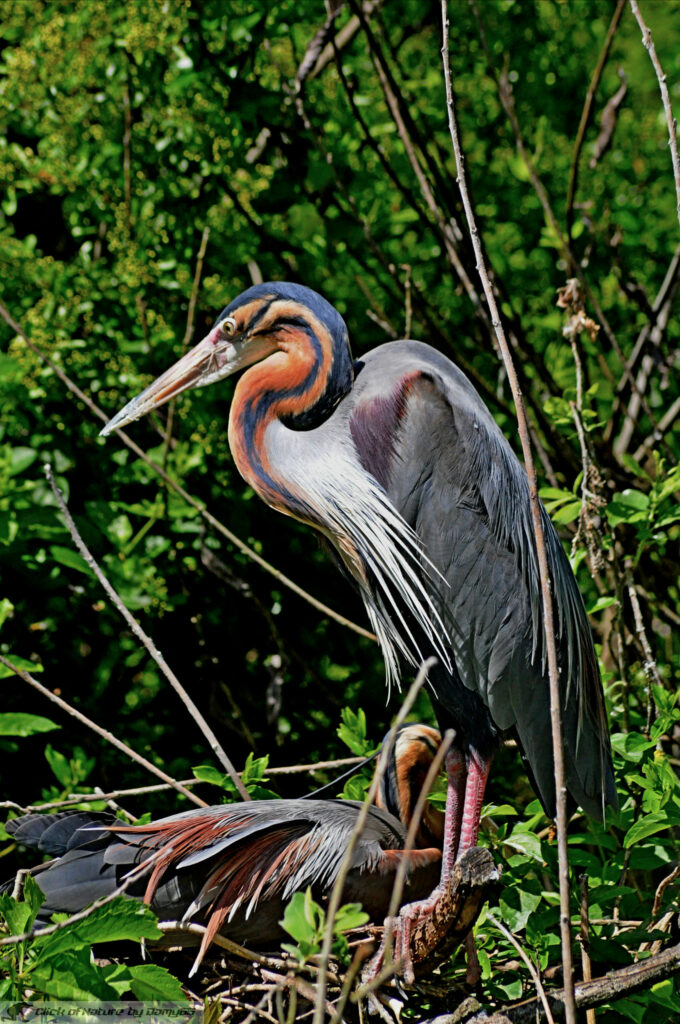
Suggested reading and equipment:
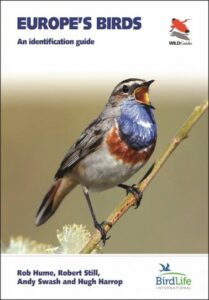 Europe’s Birds: An Identification Guide
Europe’s Birds: An Identification Guide
£19.99
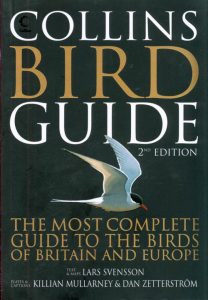 Collins Bird Guide: The Most Complete Guide to the Birds of Britain and Europe
Collins Bird Guide: The Most Complete Guide to the Birds of Britain and Europe
£13.99 £19.99
£3.75
 Hawke Optics Frontier HD X: 8 x 42
Hawke Optics Frontier HD X: 8 x 42
£299.00
See our full range of binoculars
All prices correct at the time of this article’s publication.







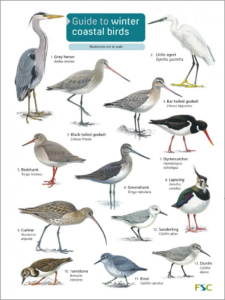 Guide to Winter Coastal Birds
Guide to Winter Coastal Birds